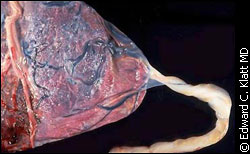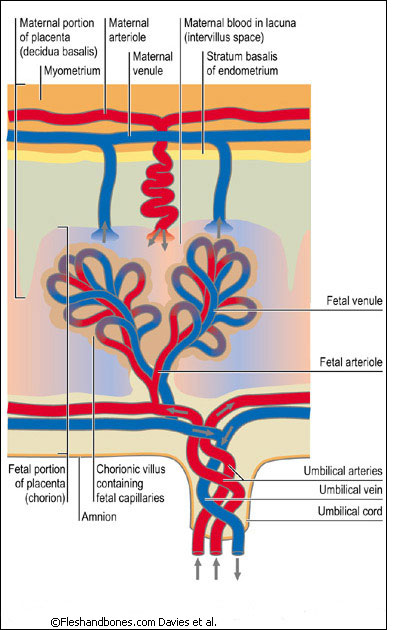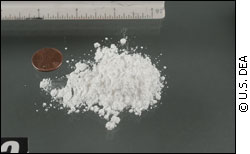
|
|
Consider the fate of the placenta — it's a companion in the womb, a life support system and then . . . bubkis. “When a woman gives birth, you realize the placenta is born also,” says Dr. Gideon Koren, Director of the Motherisk program at the Sick Kids Hospital in Toronto. “It comes out of the body of mom and it is discarded. It is thrown into a garbage can.”
For nine months, the placenta feeds and nourishes the fetus while also disposing of toxic waste. Without it, the fetus could not survive. After the baby is born, the placenta no longer serves a function. Among organs, it is unique. It is the only organ in the human body that serves a vital function and then becomes obsolete. The placenta “looks like a big steak but actually in reality, it is a blood lake, mom’s blood, babe’s blood and between them actually is only one layer of cells,” Koren says. “But the placenta, despite looking simple, is a very, very sophisticated organ.” And. it's finally getting some attention. Koren and his team are conducting innovative research to better understand how this "sophisticated organ" works. Among their many research interests, Koren’s lab studies the role of the placenta in protecting the fetus from toxic substances. Recently, his team developed a novel test to determine fetal exposure to cocaine during pregnancy. Their results, published in the journal Drug Monitor in February 2007 suggest that the placenta has a role in protecting the fetus from cocaine and other harmful substances. The placenta functions as a very efficient transport route between the mother and the baby. Fetal blood travels via veins in the umbilical cord to the blood vessels in the placenta. There, waste products pass across a barrier consisting of a single layer of cells into the mother’s blood. At the same time, nutrients pass from the mother’s blood into fetal circulation and are transported back to the fetus by the umbilical arteries.
“If mom is anemic, if mom does not have enough blood in the body because of one or another reason, she may even die during labour when she bleeds but miraculously the baby has enough blood because the placenta sucks from mom iron and gives it to the baby,” Koren says. But harmful compounds like alcohol and cocaine can be carried between mother and fetus as well. Consequences of cocaine use during pregnancy “Stimulants in cocaine produce a kind of self-centered high," says Dr. Richard Foltin, a professor of neuroscience and the director of the cocaine research laboratory at the Substance Use Research Center at Columbia University. “It makes you overall feel like you are a better person as well being a nice, big positive mood increase,” he says. The specific effects of cocaine on fetal development are unknown. Studies suggest that fetal exposure to cocaine can result in greater occurrences of developmental defects, still birth or spontaneous abortion. “Years ago, there was a large concern about crack babies or cocaine babies who were indeed born at lower birth weights and appeared to have greater risk,” says Foltin. “I would say the consensus now is, even if it is born at a lower birth weight if it has good post-natal care, developmental trajectory is good and they will catch up with normal babies.” Some babies may not show obvious signs of cocaine exposure, much depends on the extent of cocaine use during pregnancy. So the ability to determine whether a fetus has been exposed to cocaine becomes extremely important because a physician who knows about previous cocaine exposure will be able to provide better care for the developing infant. Drug testing in a fetus In his study, Koren notes that drug use during pregnancy is estimated at around 5-10 per cent and that more women are using cocaine. While this research focused on developing a new and reliable test to determine prenatal cocaine exposure, the results also allow cocaine to be quantified in the fetus. This provides insight into how much cocaine is trafficked to the fetus through the placenta.
To do this, Koren's new test analyzes fetal hair and stool samples for markers of cocaine drug use during pregnancy. These innovations minimize the reliance on the mother to honestly report drug use.
Koren and his group tested both the hair and stool sample for 313 babies. Of those, roughly 75 per cent tested positive for cocaine in both samples. Hair samples taken from mother-infant pairs indicate that levels of cocaine in the mother correlated with levels of cocaine in the fetus. This means a mother with a lot of cocaine in her hair sample had a child with a lot of cocaine in its hair sample. But a closer look at the relationship between mother-infant pairs indicates that many infants had less cocaine in their hair samples than would be expected. This suggests that the placenta plays a role in protecting the fetus. “We already know that there are examples of medications that the placenta pumps from the baby back to mom. Kind of an attempt by nature to protect the baby from bad things that mom may have in her system,” Koren says. His lab is one of the few in North America to perform studies on the live placenta. Koren's team brings the newly born placenta into the lab and pumps it with oxygen and a solution of water and salts. This circulates through the organ and provides nourishment. With gentle treatment, the placenta can stay alive for up to five hours. This gives them time to examine how harmful substances move from the maternal side through the umbilical cord to the fetal side of the placenta and how the organ may shield the fetus. Koren says, “It makes developmental sense that nature is working that way but we are at a very early stage of learning.” Their next challenge is to study fetal exposure to methamphetamines.
|
|
|


